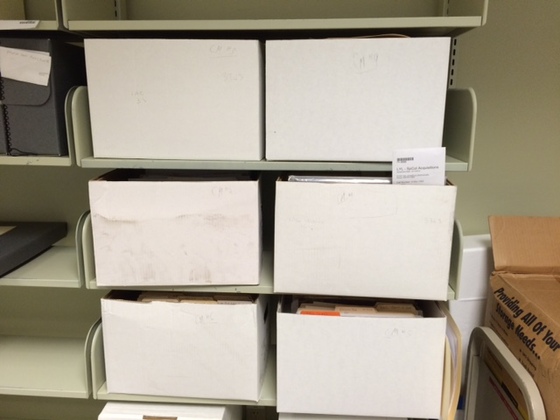Well, this is it! My final week at CCEPS, and thus my final blog entry. As the case is in most summers, I must ask the question, where has the time gone?!
Picking up from last week, as I began entering all of the necessary information into Archivist Toolkit, all of the front matter I needed to create has now been written and completed. These included the processing information, which was neat to recap all of the different processing decisions and methods used over the course of the summer and include the details within the Processing note. The other key remaining pieces of front matter I still had to work on were the Biography, Scope and Contents, and the Abstract.
At first, approaching the biography, scope and content, and abstract seemed intimidating. First off, when I initially started working on the front matter, I knew that this meant writing what would be seen by all future researchers when they visit the collection’s finding aid. A bit intimidating at first. Plus, unlike most of the other pieces of front matter, there was no template for the remaining three; rather, a description of what was expected.
Therefore, I had to look at other examples of a processed collection’s front matter and had to conduct my own research as well. However, writing the biography was extremely interesting, since it not only allowed me to do some research and learn more about Char Miller, but it also provided a nice way to “wrap” everything I have been working on, to provide some context for all of his materials within the collection. The Scope and Content notes also proved a valuable exercise. By the end, this process was enlightening and not nearly the daunting task it had seemed. I also learned how to wrap a text in AT, so that it would appear as an italicized title once produced in the finding aid!
This summer has truly been a unique and worthwhile experience. I learned a great deal about processing an archival collection and many of the “behind-the-scenes” aspects of Special Collections. I also learned a lot about environmental history – a subject in which I am increasingly interested – merely through processing the collection of Char Miller. Despite not being able to read the actual materials in full, by perusing them in order to understand the scope and content (it is useful terminology!) of the material and then create adequate folder titles, I was able to gain an awareness of Professor Miller’s work and many of the topics he studied that I simply did not have before I started at CCEPS. And, of course, the experience proved invaluable as an introduction to working with archives and understanding the intricacies of archival processing and cataloging. It is with this experience that I hope to build on what I have learned and incorporate it into my future endeavors. Working with CCEPS has certainly enhanced my interest. The work was challenging at times, even frustrating, but overall, the benefits surely outweighed any of these concerns.
I must also thank the Special Collections staff, particularly Lisa Crane, with making sure the process never posed too much of a challenge or burden. Finally, sharing my experiences with this blog really enhanced the overall experience and helped make the work more exciting, as I knew I had to recap the week and tried to do so in an informative and interesting manner. I look forward to hopefully gaining another opportunity in the near future, although I’m not sure there will be a blog involved again!
So, as I conclude my final day at CCEPS, I hope this will signify a beginning rather than an end. I hope you enjoy these final images of the collection, all boxed, labeled, and ready to go! The few boxes of different sizes contain items such as t-shirts, plaques, medals, and oversized publications. “Feels like only yesterday…” I was putting the picture of all of the stuff mixed throughout 13 miscellaneous boxes!










